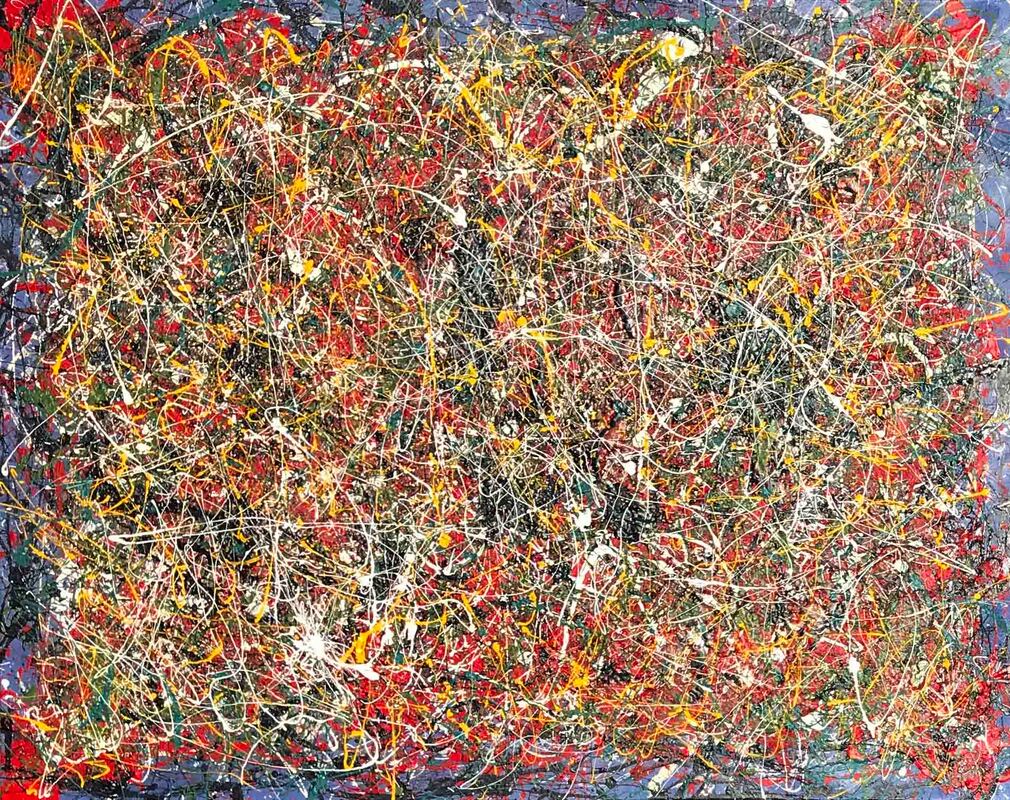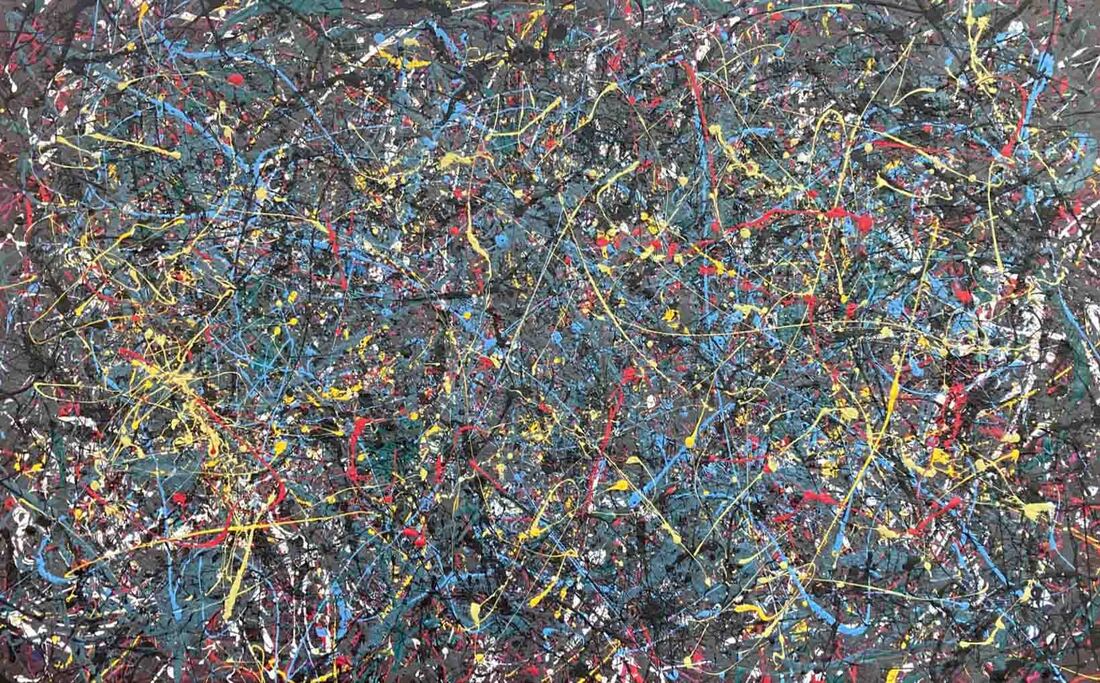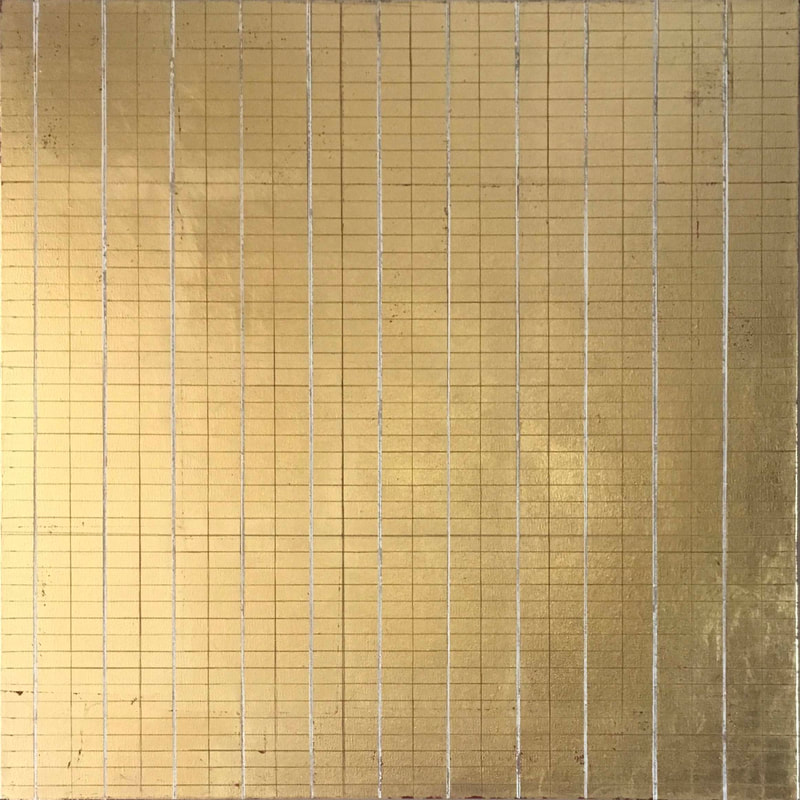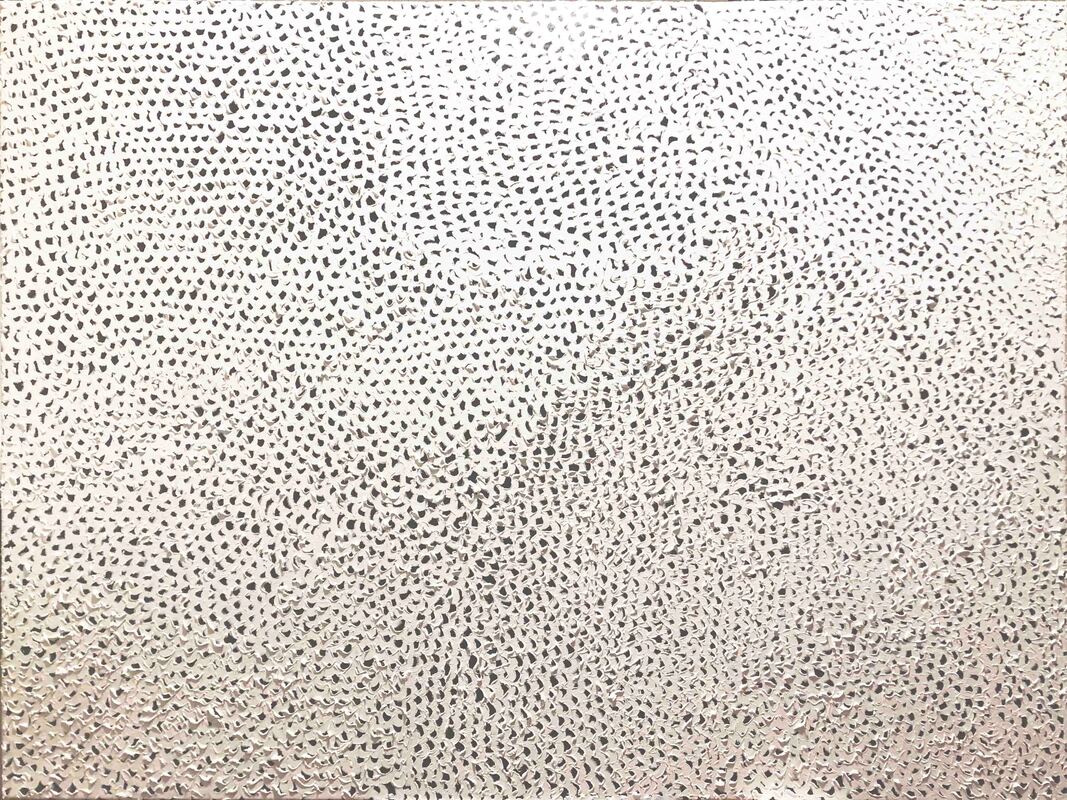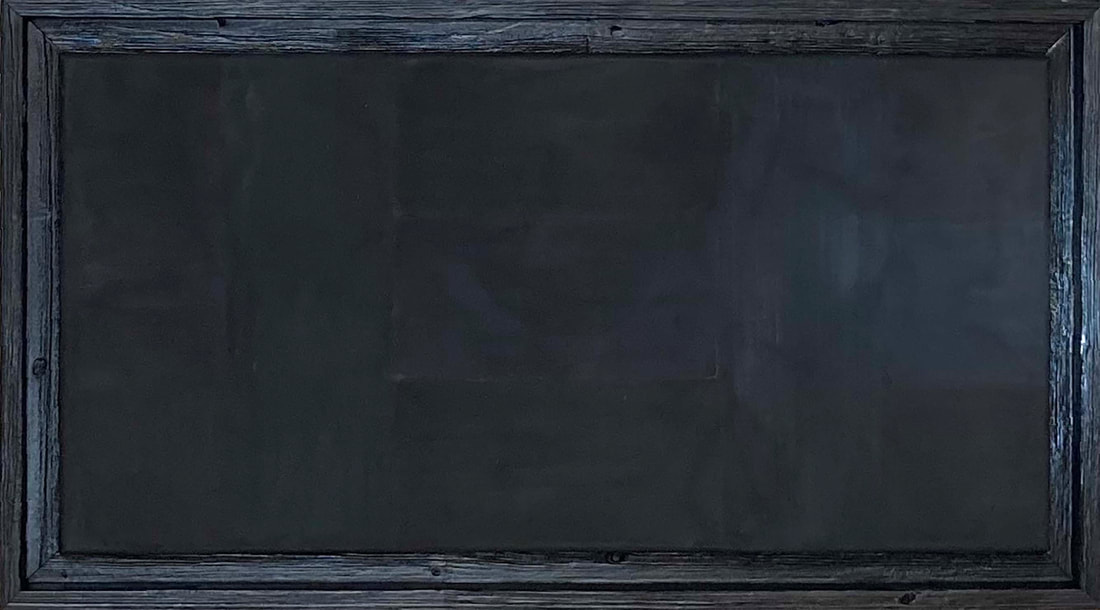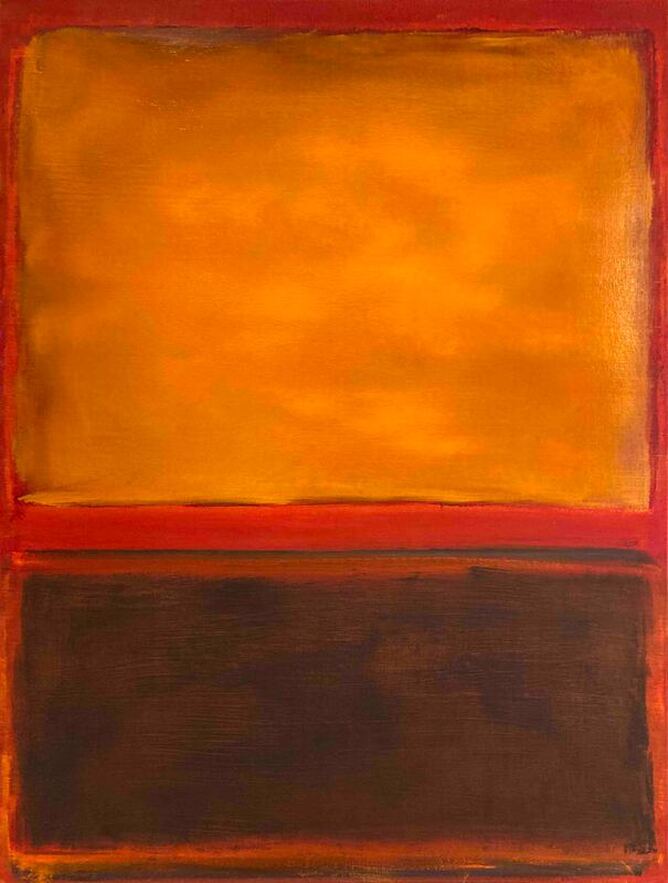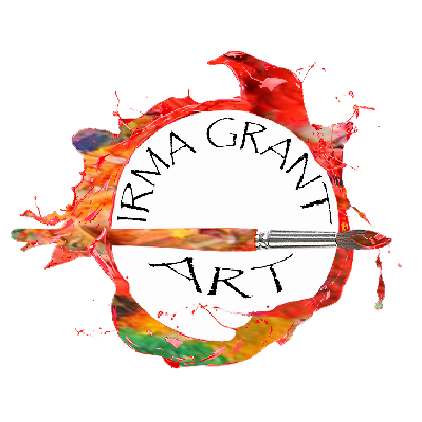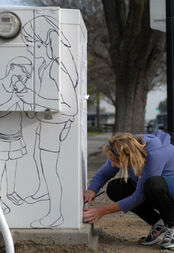|
This last month I participated in a MOMA studio art class where we were introduced to different artists from the New York School of Expressionism. Before reading the title and description, see how many abstract expressionist artists you can correctly identify: ZIP: 12" x 36" Acrylic on Canvas First, I painted the entire canvas with two coats of Liquitex Acrylic Cerulean Blue Hue. Then, I taped two strips (one for each zip) and painted the rest with Phthalocyanine Blue (green shade). It again, needed two coats. Once I removed the blue tape, I realized that the zip impressions matched the blue color from the blue tape. Then, I tried the two different methods of zips: (1) taping two strips and painting in between with a Light Portrait Pink and (2) taping one strip and adding a zip with a palette knife. For fun, I added a small green zip at the edge of the canvas. I now understand Barnett Newman's obsession with making straight zips. It's not as easy as it looks. I ended up adding more zips to the right of my painting as the left zip is slightly off. More zips would have highlighted the 'offness.' Araignée: 48" x 60" Oil and Enamel on Canvas This was so much fun! After watching a few videos on YouTube showing Jackson Pollock in action, I tried to follow his various steps on how he approached the canvas. I don't smoke, so had little, long Espresso breaks in between the various layers. Given what I know of Pollock, I don't think he waited for each layer to completely dry. He didn't have the patience for that. I used string and sand, turkey baster, thin and wide paint brushes but enjoyed the mixing stick from Home Depot the best. What I like about the painting in the end are the alligator skin effects and the textured feeling of the canvas. The paints shrunk in place. However, it did leave a few cracks, small ones on the heavy loaded areas. I'm sure these are the cracks that called Pollock back into maybe adding more layers in the end. It's a heavy painting and I see why Pollock liked commercial enamel house paint. It flows. 24K: 24"x24" Gold Gilded and Acrylic on CanvasI was very lucky to visit MOMA San Francisco last weekend and indulge myself in Agnes Martin's Octagonal room with 7 of her paintings: "Wheat," "Drift of Summer" and the rest "Untitled". In the end, I decided to use her painting "Friendship" as an inspiration. I love colors. I did not use real gold, too expensive, but ended up with imitation gold leafs. I'm sure Agnes carefully glued the leafs on the lines she wanted. I wasn't that careful and hence, the edges of the gold leafs do come through in certain sections of the painting. Oops! The lines kind of happened. Again, I wasn't that careful and as you can tell from the photo, I miscalculated the distances for the vertical lines. I used a potato knife to 'chisel out' the gold, exposing the red under paint. Then, I painted the white lines on top (Newman Style). Infinity Net: 36" x 48" Oil on CanvasIt’s very therapeutic covering a canvas with white arches. While painting Yayoi Kusama’s inspired "Infinity Net," I couldn’t help but think of the chicken and egg debate: Does Ms. Kusama's mental illnesses channel her art or does her art channel her mental illnesses? The obsessive-compulsive repetition of painting small loops that go on and on is mesmerizing but I don’t think I could do this for days, or even months on end like Ms. Kusama. Black Whole: 24” x 12” Oil on CanvasI’m not sure I properly followed Ad Reinhardt's method. The demonstration video showed that the pre-prepared paint, with most of its binder (linseed oil) removed, would dry quickly. Well, my paint took hours to dry, prompting me to dust off the heat gun. This helped speed up the drying, but I still needed to repaint each square a number of times – often removing the previous layer. Maybe it was the cheap canvas? Who knows? I decided to frame the canvas before painting as finger prints would show if touched – even when dry. After multiple attempts, here is my Ad Reinhardt inspired painting of “Black Whole (With the ‘W"). Don’t think I’ll ever use this technique again. I understand why Ad decided to paint this way: the subtlety of the matted black colors is mesmerizing and you really have to take your time to notice the different hues of black. Untitled 2020: 40" x 30" Oil on Canvas This Marc Rothko inspired painting made me struggle, encouraged me to think outside the box, required a load of paint, and lots of wiping, removing, and cleaning.
I had a vision of doing a rectangular band in the center of the canvas with a slightly darker version for a background color: an extension of Rothko’s later work. My first mistake was, I started out with a Cadmium Yellow Deep Hue oil paint mixed with linseed oil to make it flow better. It looked wonderful – for a background. After letting it dry, I decided it needed a darker background, and I painted over the entire canvas with an Alizarin Crimson oil paint mixed with Dammar Varnish. Oh, boy, did it smell up the house. It dried fast though and I was left with a darker background. Gone was my happy Cadmium yellow. Then, the experimentation began. I tried painting a portal hole with a slightly darker maroon: my original vision. It was too plain. I added more colors to the canvas, only to remove it a day later. I liked the results of mixing a cold wax medium into the paint to give it a more muted look. I placed various versions of Cadmium Yellow on the top. I mixed paint with mineral spirits and removed paint with mineral spirits. My Rotko inspired painting went through many transformations. In the end, I’ve come to realize that Rothko didn’t just paint his canvases, he stained them. I will definitely use some of his techniques in future projects.
0 Comments
|
VISUAL ARTIST
ILLUSTRATOR TEACHER Archives
May 2024
|

